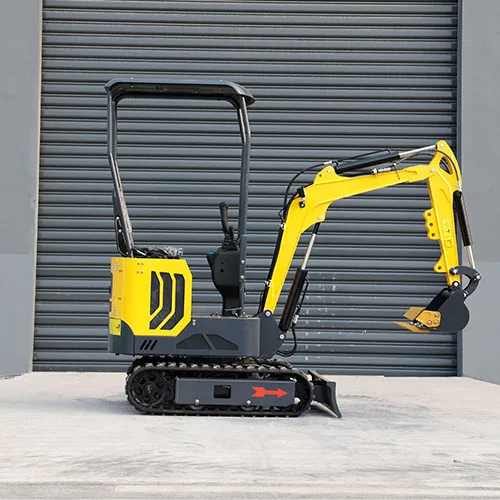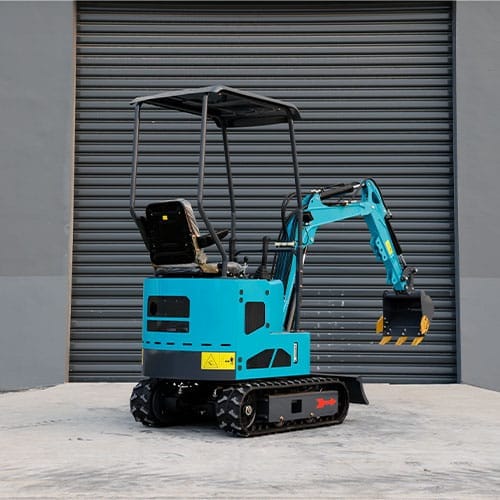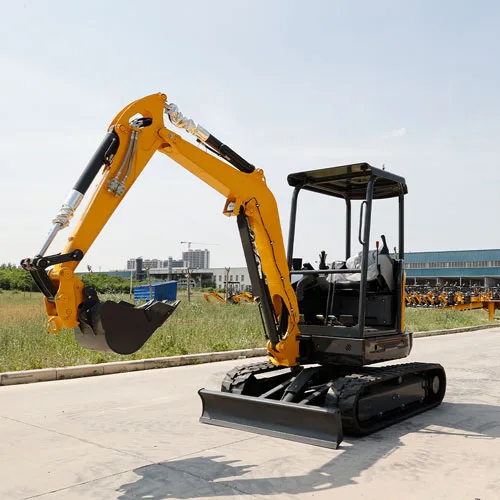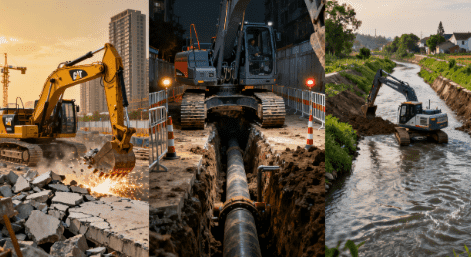I’m thrilled to have you here! Before we dive into the content, let’s stay connected. Join me on my social media platforms for more insights, community engagement, and regular updates. Here’s where you can find me:
📌 Facebook: Shandong Huaying International Trade Co., Ltd.
Now, let’s embark on this journey together. I hope you find the content here not only insightful and engaging but also valuable to your interests. Let’s learn, grow, and connect!
Table of Contents
Introduction

In the world of compact construction and landscaping equipment, the smallest mini excavator plays a surprisingly significant role. While their size may appear limited, these compact machines deliver power, versatility, and efficiency in settings where larger machines simply can’t operate. Whether you’re a contractor, a landscaper, or a DIY homeowner, understanding the specs of the smallest mini excavator helps ensure you’re investing in the right equipment for tight-access jobs.
The smallest mini excavator can weigh under one ton and is typically used for digging, trenching, and light demolition. It’s an ideal choice for indoor jobs, backyard projects, and small-scale commercial work. Despite its compact size, this machine still comes packed with essential specifications that determine its effectiveness, reliability, and versatility. In this blog post, we’ll explore seven critical specs of the smallest mini excavator that every buyer or operator should know.
Operating Weight: Balancing Size and Stability
The operating weight of the smallest mini excavator typically falls between 800 kg to 1000 kg. This spec is essential because it influences stability during operation, transportability between job sites, and ground pressure.
A machine with too light of an operating weight may lack stability, especially when using heavier attachments. However, heavier machines may not meet specific site access requirements, such as working on finished flooring or in indoor spaces. Thus, selecting the optimal weight ensures maneuverability while maintaining enough mass to handle small digging tasks effectively.
Engine Power: Efficient Energy in Compact Form
Engine power in the smallest mini excavator ranges from 8 to 15 horsepower. Though these engines are smaller than those in standard excavators, they’re optimized for fuel efficiency and low emissions.
Diesel-powered engines dominate this category, offering better torque for digging. Many models also comply with EPA Tier 4 or EU Stage V emission standards, making them suitable for both urban and indoor use. Selecting an excavator with the right engine power ensures it can perform routine excavation work without straining the system.
Digging Depth: How Deep Can It Go?
The smallest mini excavator offers a digging depth of approximately 1.5 to 2.2 meters. This depth is sufficient for tasks like:
- Installing irrigation systems
- Digging for fence posts
- Shallow utility trenching
Digging depth determines how well the machine can perform in varied soil conditions. When comparing models, always consider the depth capability alongside the boom and arm reach, as these specs affect both vertical and horizontal performance.
Dimensions and Footprint: Accessing Tight Spaces

One of the primary benefits of the smallest mini excavator is its narrow profile and small footprint. Most machines in this category feature:
- Widths as narrow as 700 mm
- Heights around 1500 mm
- Lengths between 2500 mm to 3000 mm
These dimensions enable the machine to pass through doorways, gates, and narrow urban alleys. When selecting your mini excavator, ensure the dimensions fit the intended workspace while leaving room for safe operation.
Hydraulic System: Powering Performance
Hydraulics are the lifeblood of any excavator. In the smallest mini excavator category, the hydraulic flow typically ranges between 12 to 20 liters per minute, depending on the model. The pressure rating usually stays under 200 bar, optimized for powering the boom, bucket, and any attachments.
Key benefits of a strong hydraulic system include:
- Smooth control for delicate tasks
- Compatibility with attachments like augers or breakers
- Reduced maintenance due to efficient flow paths
Matching hydraulic capacity with job demands ensures efficient digging and movement without stressing the system.
Table: Comparison of Key Specs in the Smallest Mini Excavator
| Specification | Typical Range | Importance |
|---|---|---|
| Operating Weight | 800 kg – 1000 kg | Influences stability and transport ease |
| Engine Power | 8 HP – 15 HP | Determines digging and driving capability |
| Digging Depth | 1.5 m – 2.2 m | Suitable for light-duty excavation |
| Width | 700 mm – 900 mm | Allows access to narrow spaces |
| Hydraulic Flow | 12 L/min – 20 L/min | Affects attachment performance and cycle time |
| Boom/Arm Reach | Up to 3 meters | Determines operational range |
| Ground Pressure | Low (<0.3 kg/cm^2) | Important for landscaping and turf-friendly applications |
Boom and Arm Reach: Maximizing Efficiency
The boom and arm configuration of the smallest mini excavator allows for an average reach of about 3 meters. This reach determines how far the bucket can extend and is vital for trenching and grading tasks.
Some models also come with a variable angle boom, which improves reach around obstacles and allows for offset digging. When evaluating a machine’s versatility, take into account both horizontal and vertical reach.
Ground Pressure: Working on Delicate Surfaces

Low ground pressure is a hallmark of the smallest mini excavator. With pressure values typically below 0.3 kg/cm^2, these machines are perfect for landscaping, turf maintenance, and working on finished surfaces.
This feature prevents damage to lawns, pavements, and flooring, making these machines suitable for projects where surface preservation is crucial.
Conclusion
Choosing the smallest mini excavator doesn’t mean compromising on performance. By carefully evaluating specs such as operating weight, engine power, digging depth, and hydraulic capacity, users can select a machine that excels in confined spaces and small-scale projects.
With growing demand for versatile, fuel-efficient, and operator-friendly machines, these compact excavators are an increasingly valuable asset. Whether you’re a contractor or an equipment rental business, understanding the specs behind the smallest mini excavator can help maximize productivity and minimize downtime.
FAQ
What tasks is the smallest mini excavator best suited for?
It’s ideal for light-duty excavation such as garden trenching, utility installation, and small demolition jobs.
Can the smallest mini excavator be used indoors?
Yes, most models are compact enough for indoor construction or renovation, especially with electric or low-emission diesel options.
Is the smallest mini excavator easy to transport?
Absolutely. Its light weight and small dimensions allow it to be moved using a standard trailer or even a pickup truck with a loading ramp.
Are there attachments compatible with the smallest mini excavator?
Yes. While limited by hydraulic capacity, attachments like augers, breakers, and rippers can be used with most models.
How do I maintain a smallest mini excavator?
Routine checks on engine oil, hydraulic lines, and undercarriage components are essential. Always follow the manufacturer’s maintenance schedule.



